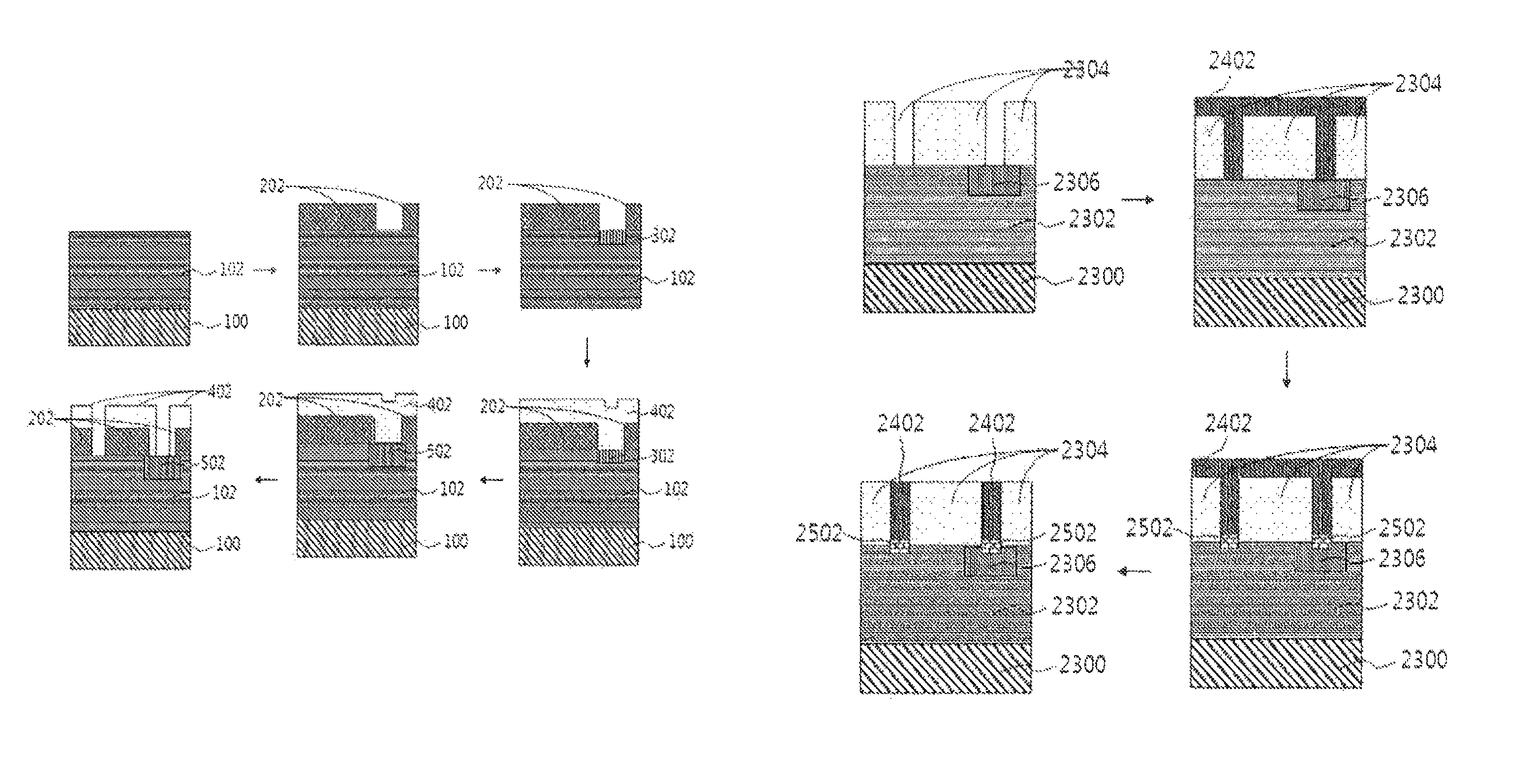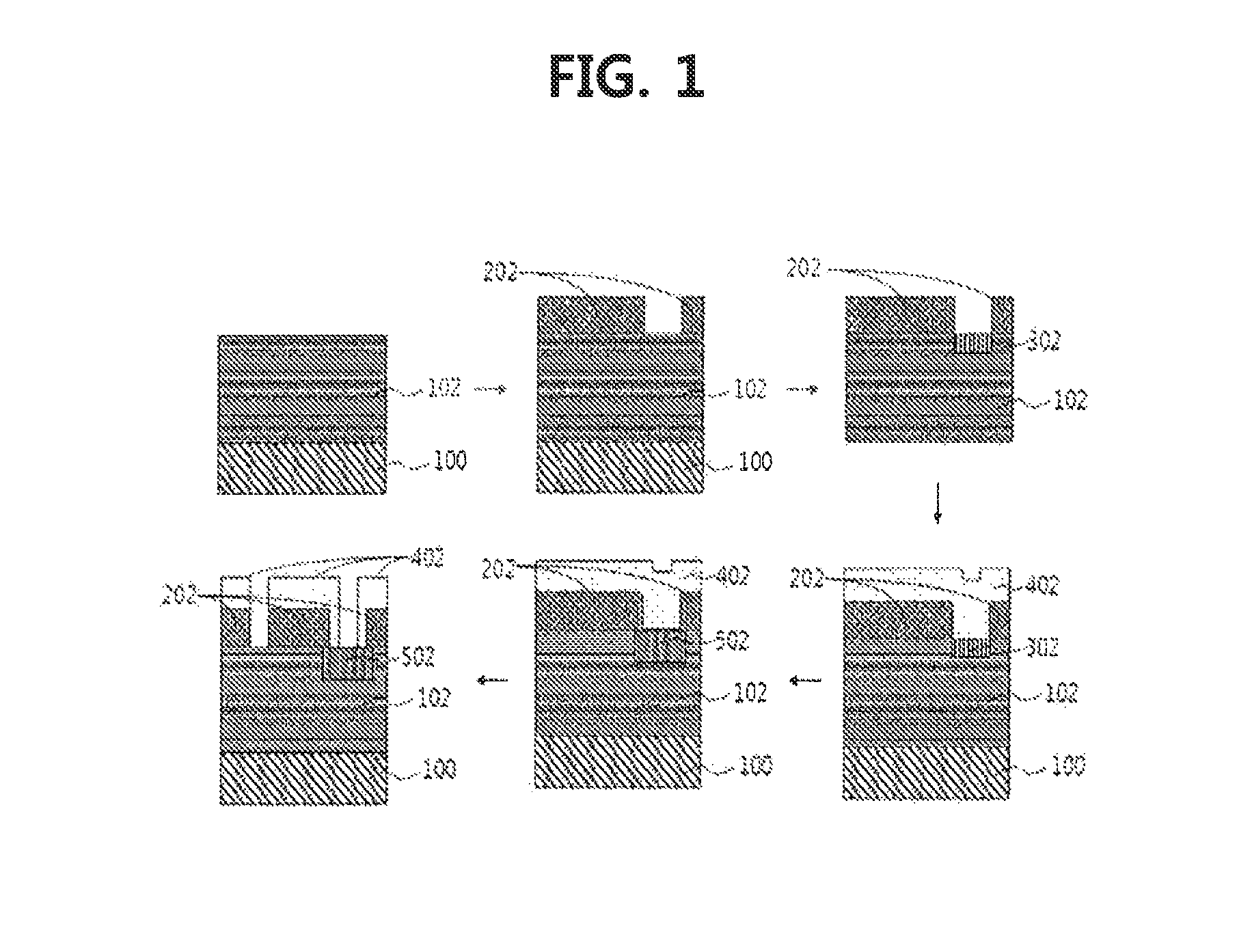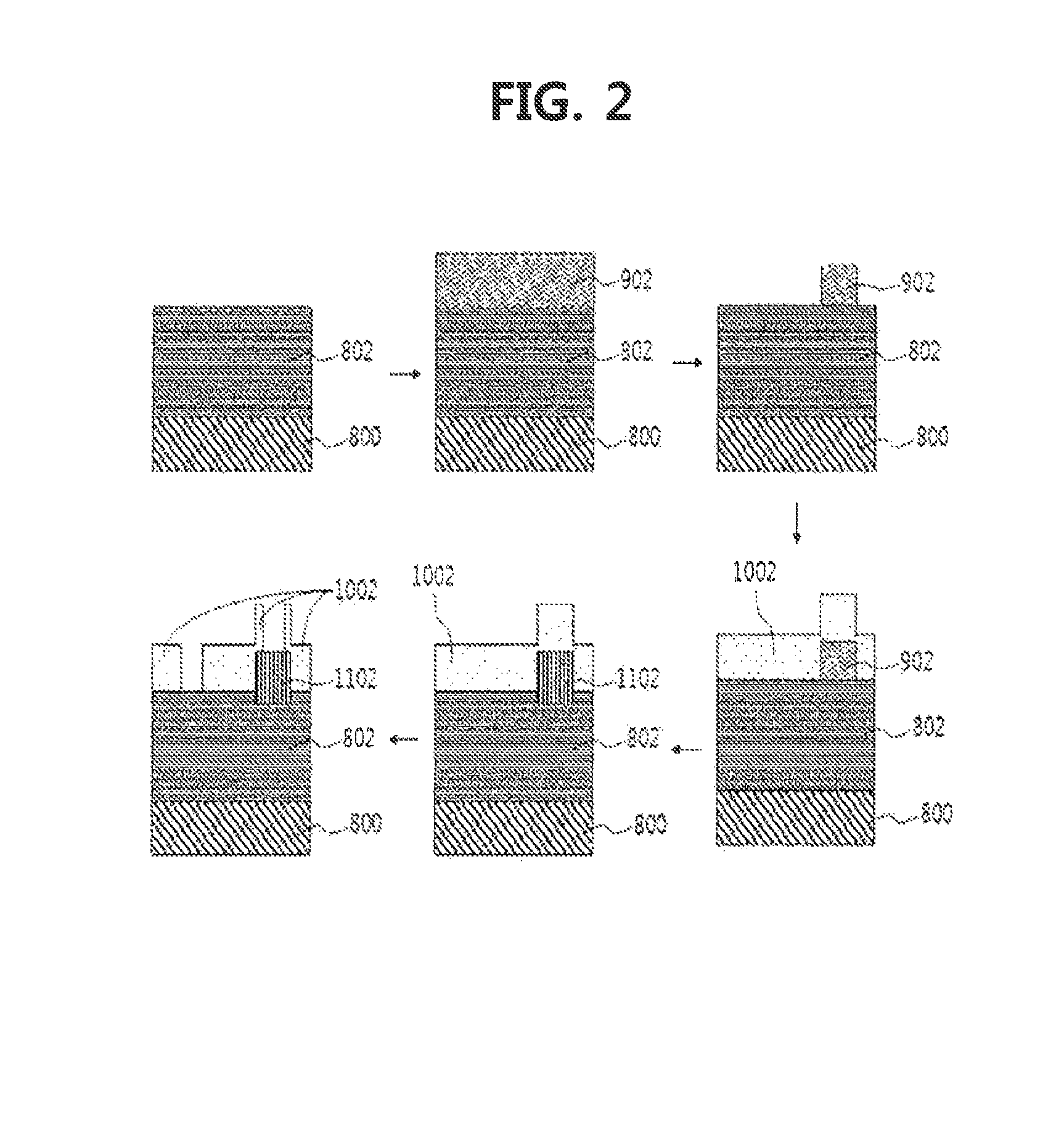Method of healing defect at junction of semiconductor device using germanium
a technology of semiconductor devices and defects, applied in the direction of semiconductor devices, electrical equipment, basic electric elements, etc., can solve problems such as the probability of degradation
- Summary
- Abstract
- Description
- Claims
- Application Information
AI Technical Summary
Benefits of technology
Problems solved by technology
Method used
Image
Examples
Embodiment Construction
[0027]The present invention addresses a method of healing defects at junctions of a semiconductor device, by performing annealing, in particular, annealing at 600˜700° C. for 1˜3 hr after formation of an n+ Ge region.
[0028]Hereinafter, a detailed description will be given of the present invention with reference to the appended drawings.
[0029]FIGS. 1, 2 and 3A and 3B schematically illustrate three kinds of processes according to the present invention, and FIGS. 4A to 4D schematically illustrate formation of an electrode using the above processes.
[0030]The present invention is embodied by three kinds of processes.
[0031]Specifically, as illustrated in FIGS. 1 and 4A, Process 1 includes: 1) growing a p-Ge layer 102 on a substrate 100; 2) depositing an oxide film 202 on the p-Ge layer 102 and patterning the oxide film, thus forming a pattern for an n+ Ge region 302; 3) subjecting the pattern for an n+ Ge region 302 to ion implantation using a n-type dopant, thus forming an n+ Ge region 3...
PUM
 Login to View More
Login to View More Abstract
Description
Claims
Application Information
 Login to View More
Login to View More - R&D
- Intellectual Property
- Life Sciences
- Materials
- Tech Scout
- Unparalleled Data Quality
- Higher Quality Content
- 60% Fewer Hallucinations
Browse by: Latest US Patents, China's latest patents, Technical Efficacy Thesaurus, Application Domain, Technology Topic, Popular Technical Reports.
© 2025 PatSnap. All rights reserved.Legal|Privacy policy|Modern Slavery Act Transparency Statement|Sitemap|About US| Contact US: help@patsnap.com



